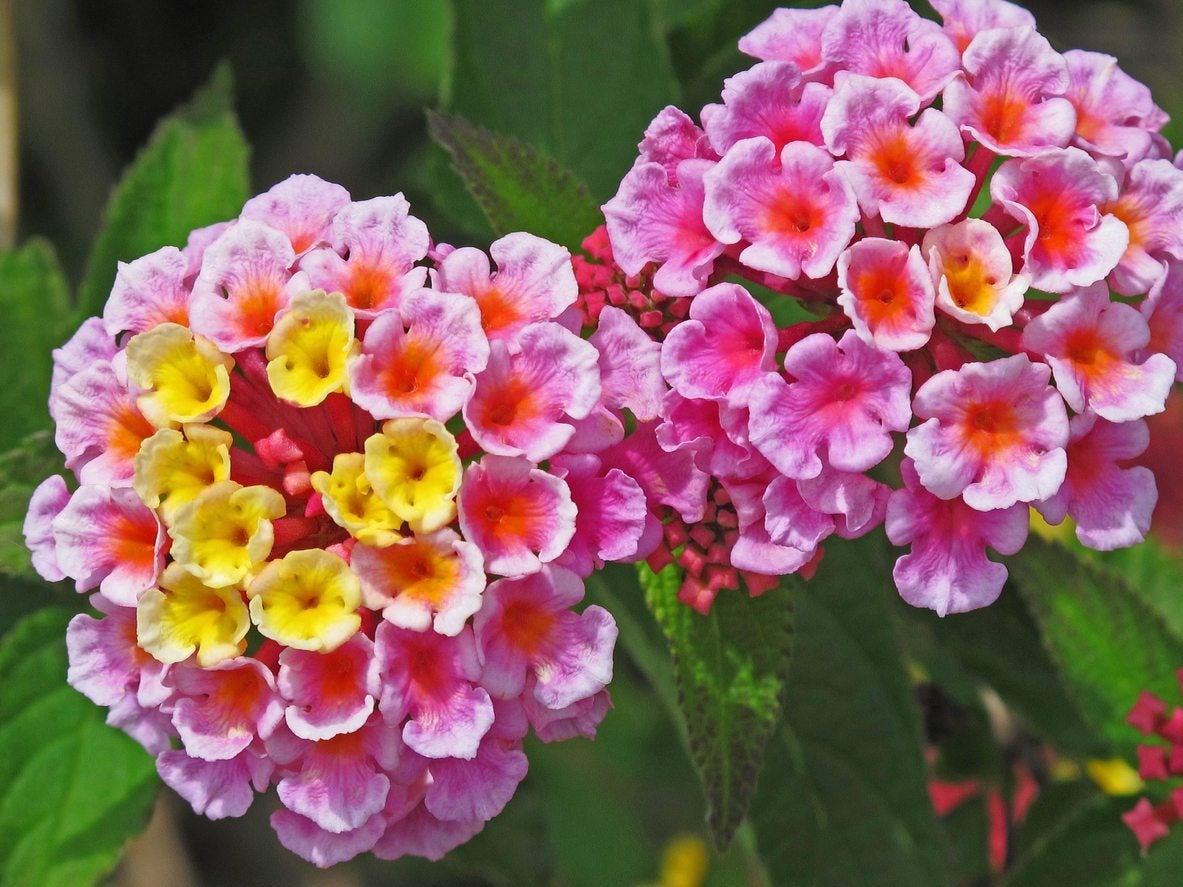Color Changing Lantana Flowers – Why Do Lantana Flowers Change Color

Lantana (Lantana camara) is a summer-to-fall bloomer known for its bold flower colors. Among wild and cultivated varieties, color can range from bright red and yellow to pastel pink and white. If you’ve seen lantana plants in gardens or in the wild, you’ve probably noticed multi-colored lantana flowers and flower clusters. Different lantana varieties have different combinations of colors, but multiple colors are also often found on a single plant. Individual multi-colored lantana flowers also exist, with one color inside the tube and another on the outer edges of the petals.
Color Changing Lantana Flowers
Like many other members of the verbena plant family (Verbenaceae), lantana bears its flowers in clusters. The flowers on each cluster open in a pattern, beginning in the center and moving out toward the edge. Lantana flower buds typically look one color when they’re closed, then open to reveal another color underneath. Later, the flowers change color as they age. Since a flower cluster has flowers of multiple ages, it will often display different colors in the center and on the edges. You can observe lantana flowers changing color in your garden as the season advances.
Why Do Lantana Flowers Change Color?
Let’s think about why a plant might want to change the color of its flowers. A flower is a plant’s reproductive structure, and its job is to release and collect pollen so it can later produce seeds. Plants use flower color along with fragrance to attract their ideal pollinators, whether they are bees, hummingbirds, butterflies, or anything else. A study by botanists H.Y. Mohan Ram and Gita Mathur, published in the Journal of Economic Botany, found that pollination triggers wild lantana flowers to begin changing from yellow to red. The authors suggest that the yellow color of open, unpollinated flowers directs pollinators to these flowers on a wild lantana. Yellow is attractive to thrips, the top lantana pollinators in many regions. Meanwhile, magenta, orange, and red are less attractive. These colors may turn thrips away from pollinated flowers, where the plant no longer needs the insect and where the insect won’t find as much pollen or nectar.
Chemistry of Color Changing Lantana Flowers
Next, let’s look at what is happening chemically to cause this lantana flower color change. The yellow in lantana flowers comes from carotenoids, pigments that are also responsible for the orange colors in carrots. After pollination, the flowers make anthocyanins, water-soluble pigments that provide deeper red and purple colors. For example, on a lantana variety called American Red Bush, red flower buds open up and display bright yellow interiors. After pollination, anthocyanin pigments are synthesized within each flower. The anthocyanins mix with the yellow carotenoids to make orange, then increasing levels of anthocyanins turn the flowers red as they age.
Sign up for the Gardening Know How newsletter today and receive a free copy of our e-book "How to Grow Delicious Tomatoes".
Ilana Goldowitz Jimenez is a scientific and agricultural writer with a B.S. in Plant Sciences from Cornell University and a PhD in Chemical Biology and Infectious Disease from Harvard University.